|
Music of the Native North America by Graham Lees
|
||||||||
|
There
is no doubt that a new found interest and appreciation of the history
and culture of the Native American has developed over recent years,
due to more accurate detailed movies such as A Man Named Horse, Dances
With Wolves and Thunderheart. They have helped convey a small part
of the Indian culture to millions of people throughout the world.
While on holiday around the Wyoming and South Dakota areas of the
USA, I had the opportunity to experience some of the fine music and
dancing of the North American At
the Crazy Horse Memorial Centre, situated in the Black Hills of South
Dakota, sees the work progressing on the mountain carving of Chief
Crazy Horse. Started in 1948, the statue will see Crazy Horse sat
on his horse with an arm outstretched. At present only the head of
Crazy Horse is complete, there is still many years of work to be done
before the monument will be finished. At the visitor centre, a small
group of children sat round a large Indian drum beating out a rhythm
with one of the tribeís adults. They demonstrated how the drum was
used in their music and how childrenís interest was drawn, by using
adapted nursery rhymes, such as Twinkle Twinkle Little Star, being
changed to Twinkle Twinkle Morning Star for their own purpose. Inside
the large hall we found several Native Americans busily making and
selling their jewellery and goods Bryan
gave us a short demonstration of his music, which includes the sound of
nature, including several birdcalls, crickets in the summer night air
and the sounds of the gentle wind blowing through the cottonwood trees,
very soothing and relaxing and can be heard on Bryanís CD The Flute
Player.
Cheyenne
Frontier Days is the biggest outdoor rodeo in the world and known
affectionately as the ďDaddy of `em AllĒ. On the South side of
Frontier park stands the Indian Village, portraying many aspects of the
Native American art and culture and in particular their music and
dancing. William Gutierrez is considered by many to be one of the
premier Native American flute players in the USA. William performs both
traditional songs as well as his own compositions. He explained to me a
little about the cedar flute and the musician. ďIíve
been making and playing flutes for about 27 years. When I was given
my first flute, was actually at a Pow Wow in Bismarck, North Dakota,
where my teacher was setting up a display to sell his flutes for the
very first time in his life. I was sat next to him and saw the flutes
(Iíd always loved the sound of the flute) and asked him the very same
question that Iím asked today. Are they hard to play? He said no,
what you do is close your eyes and let your heart tell you how to
play. It will tell you which finger to lift next He said just close
your eyes and try this one. I was a little embarrassed by that, I
wasnít going to close my eyes, there were hundreds of people walking
by. A little later when things slowed down and there wasnít as many
people, I took one of the flutes and I kinda snook to the back of
the booth and I closed my eyes and started doing what he told me.
I started listening to my heart and this song started coming and I
was going wow, Iím going to have to buy one of these. When I finished
at that point, what I called my song, I opened my eyes and he was
standing right in front of me. He had a look in his eye and said you
felt that didnít you. A little embarrassed I said ahhh; it must have
been indigestion or something. He goes yeah! thatís what I thought
and he pulled a flute from behind him and said this is for you and
gave me the flute. I was really taken by that and he said that he
wanted to teach me the beginning of a song and he wanted me to finish
it. I said I canít do that, I donít know how to do this. He said itís
the same way as you just played your song. I said can I practice for
a couple of days (this was to be a weekend Pow Wow). He said sure,
do anything you want. So I went back to the hotel and stayed up till
three o-clock in the morning practicing this piece that he had given
me and practicing
and composing the finish. I did that for two nights in a row
and on Sunday when the Pow Wow wound down and as we got to the end,
I said are you ready to here my song. He goes, yep! So we went over
to the corner and I began to play the song as he had taught me, with
the intention of playing it the way I had been practicing and loosing
sleep over for two nights, but what I came out with was something
completely different and so I just went with the flow and the song
finished itís self. When it was over he had that same look and asked
me if I would like to learn how to make them. Now Iím really
I
developed an insatiable curiosity about the flute. I stated asking not
only my own people, but other elders, brother and sisters from other
tribes about the flute. Where did it come from, how did they make them,
so on and so forth. Over the years I have been taught or given over 300
songs. Non of these songs are written down, they were all sung to me and
sometimes it is quite a chore. I have to hum it to myself for 600 miles
so I donít forget it, (laughs) until I get to a recorder. Every one of
these songs, almost inevitably, the person would tell me, play it how
you feel or play this how your heart tells you, so it becomes your song. The
other part of it is, that since I started playing the flute I hear the
songs. There are a few special places that I go to. One of them is Eagle
Canyon in Utah. I can go there and spend as little as an hour and get a
new song. Or I can spend a few days there and get a few songs. I just
hear the songsÖthey come on the wind, they come through the trees,
they come through the canyon walls and all I do is interpret what I hear
out there to the flute. Then I just repeat that and share it with as
many people as I can.Ē William
told me about a few of the things that the flute can be used for. ďThe
flute can emulate a loon, the eagle, the dove, the hawk and can not only
emulate birds, but animals as well such as the Elk. The flute at one
time was primarily used traditionally for prayer and meditation in most
cases amongst a lot of my people. However, it was used as a courting
flute, to serenade the young girl and try to win her heart. There was
one other instance that it was used, which is really not well known
anymore, it was actually used to hunt. They could use the flute to bugle
in Elk. Now in playing the flute it disrespectful to over blow the
flute, to try to get to another octave. However the only time it is
overblown, it will bugle in four octaves and it will sound just like the
Elk. I have been told this story a long long time ago, how they would
use it as such. I was in the Hickory Apache reservation in New Mexico
and just happened to be there at the time of year when it was the rut
and you could hear all the Elk bugling out there. So I decided to try it
and it bugled in one of the biggest bulls Iíd ever seen, (gust of
laughter) yeah!
When
I play my flute, other than in a setting like this. Here, today is a
commercial setting, the Indian Village is free and the entertainment is
free, it is entertainment and I share the songs that I have been given
or again, call my own compositions. But I have a time when I have to be
out there to play and that is not as routine as if I just took my flute
and started playing somewhere. What does it mean to me, the prayer and
meditation aspect of it? It has probably helped me more ways in my life,
than most people will ever receive in their lives. Just
by sitting and playing my songs is assuring. The flute has been
described as haunting, mesmerising, hypnotic, it is all those things,
but to give a for-instance: Every morning I play at least one song. I
try to get up at sunrise (which sometimes can be really hard) and Iíll
play a song that was given to me by a good friend in Sassooni Pueblo
called the Sassooni Sunrise song. The Sassooni Sunrise Song, as name
implies is first thing in the morning as the sun is raising and is a
prayer song, giving thanks to the creator giving thanks to continue on
your path for one more day. So if I donít get to play anything else, I
always play that in the morning.
Sometime
I feel like playing another song and then another. And sometimes itís
like two oíclock in the afternoon and Iíve been sitting playing the
flute all day and havenít got any of my work done. But, that is one of
those times when the songs come and it compels you to play another song
and then another song. Then
also the songs are never played the same way twice. In concert here, I
can play the same song every day in every set, but even then there is
always going to be something a little bit different about it, because
the heart always feels a little bit different from minute to minute and
day to day. And I never forget to listen to my heart. It will always
tell me which finger to lift and it does!Ē I
asked William to compare the cedar flute with the conventional modern
day flute, as seen in orchestral works. ďIn
modern day times, there are a lot of flute makers who will put them into
any key that you want and make them chromatically correct. After I
learned to play flutes, I learned how to do this too. I could put them
in any key, E or G or F and use an electronic tuner to make sure they
were in the right scale. Actually after I started doing that it didnít
feel right. I went back to my teacher and we were talking about it. I
told him, Iíd learnt this neat thing, but it wasnít right, how come?
He reminded me that within the flute they say, dwells a spirit.
It is this voice that you hear. Like all of us, we all speak, we all
sing in a different voice. He said never force the spirit to sing in
anotherís voice, allow it to sing in itís own voice. The only reason
that you need a chromatic scale is to play with other instruments.
Traditionally it was never meant to be played with other instruments. So
this made sense to me and I reverted back to just keeping mine in a
traditional scale. For instance, the length of the flute is equal to the
makers arm. Then use the palm widths, finger widths for the placement of
all the holes. The diameter of the flute is equal to the makers thumb.
So somebody much taller or shorter than me, with bigger or shorter
hands, their flute would be completely different. That ratio of
measurements produces a scale and therefore the flute is in scale in
itself. But they say that the flute is characteristic of itís maker
because of the makers size.Ē ďI
have a lot of players that do play my flutes and have a lot of comments
that there is just something about my flutes that they just canít
put their finger on thatís different. What it is, is the traditional
scale. In these days, from the moment that you are born you hear a
chromatic scale, so when they hear my music, itís
The
drum is the primary instrument in Native American culture and music and
in all kinds of music the drum maintains the beat. I talked to Frank
Armajo who is the musical director for the North American Native dance
troop performing at Cheyenne. An unassuming and quietly spoken man,
Frank told me a little about the traditions of the Indian music and
dancing. ď
The meaning, I guess, the drum has been with us since time began,
as it has always been a part of our life and culture. The songs come
from different people. They might have a dream or they might just
come to them. A song for a certain occasion, or for dancing here.
Some of the songs are handed down from generation to generation. Some
of the real old songs that we have, have special meanings. It is hard
to say how old some are. There are some that we use in special ceremonies
that we donít know how old they are, they have always been with us.
Some we use in Pow Wows are a little more modern and some of the singers
make them up as they go along. Some are pretty old, twenty, thirty
years old, but we still use them. They are still good today for whatever
we need in the dances we do. The
drum is played in what is called a push-up. It is a verse that is played
over. They play four beats called down beats and they have different
meanings for that. To honour someone, or honour the dancers. In Menís
Traditional dance, it symbolises gunshots. So when you watch some of the
traditional dances, you hear four beats, they go down, put a wing up or
their shield, and this symbolises the gunshot, someone being shot at in
battle. So that is why they go down. You will see a lot of the dancers
lift their wings up or their staffs when that beat comes on and they
bless the people and the drum. The beats are the time when they
recognise the people, bless the drum and the singers.Ē
I
asked Frank to explain a little about the dances themselves. ďSome
of the dances have been with us for a long time, like the Grass Dance.
In the old days, they were the ones who went out ahead of everybody and
they found a camping spot and they flattened the grass with dancing
movements. So the dance is still with us today. Now the Menís
Traditional is a warriors dance. They would go out hunting, or fighting
the enemy and then they would come back and tell us the story in
movement. Sneak-Up especially tells of looking for somebody, or hunting
something. They look and they go. They do that three times and the
fourth time is when they reach the enemy or catch their game, They are
victorious and that is when they do the last dance, the Victory Dance.
The Women's traditional has also been with us a long time and one of the
oldest dances we have. It is really a graceful dance to watch, truly a
beautiful dance. The Jingle Dance is also called the Healing Dance,
which has also been with us a long time. But the other dances such as
The Womenís Fancy Dance, the Womanís Fancy Shawl and the Menís
Fancy have been with us since around the 40s and are more contemporary,
brighter colours, they are faster, it takes a lot of hard work to do
them. Then there is the Hoop Dance. It symbolizes the cycle of life. The
four seasons and how life goes in a circle, that is what he is portrays
in his dance.Ē
The
music of the North American Native is truly a fascinating subject.
Although I have only scratched at the surface, I hope by writing this
article that I have offered our readers a very small insight, into this
amazing form of traditional music. |
||||||||
|
|

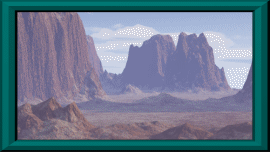

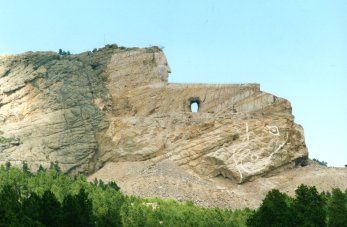 Indian.
Indian.
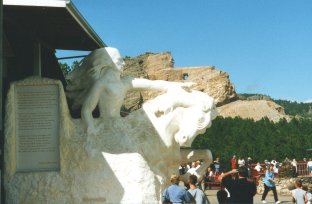 .
Bryan Akipa is a carver and player of the traditional Dakota Indian
flute and I spent only a small amount time talking to him (due to
our tour schedule), as he quietly sat working on one of his red-cedar
flutes. Bryan is a member of the Sisseton Wahpeton Sioux Tribe, telling
me that he is a self taught player and woodcarver and that the Indian
flute is meditative, emotional and visceral. Bryan said, ďin the old
times the flute was the music of lovers. The essence of the wind,
the melody of a red cedar flute, where it comes from and where it
goes is a mystery. So is everyone born to the spirit of love.Ē
.
Bryan Akipa is a carver and player of the traditional Dakota Indian
flute and I spent only a small amount time talking to him (due to
our tour schedule), as he quietly sat working on one of his red-cedar
flutes. Bryan is a member of the Sisseton Wahpeton Sioux Tribe, telling
me that he is a self taught player and woodcarver and that the Indian
flute is meditative, emotional and visceral. Bryan said, ďin the old
times the flute was the music of lovers. The essence of the wind,
the melody of a red cedar flute, where it comes from and where it
goes is a mystery. So is everyone born to the spirit of love.Ē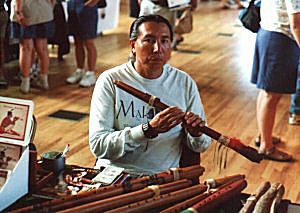 As
a young man Bryan Akipa attended the Institute of American Indian
Arts and studied fine arts with Oscar Howe at the University of South
Dakota at Vermillion. After graduation he became an elementary school
teacher for seven years. Since 1991 he has committed himself to his
chosen art and craft of the cedar flute. Bryan has composed several
pieces of his own music and says, ďAs I turn my ear to the music,
I can only imagine my great-grandfathers, but their old songs are
still here and the new are part of me.Ē
As
a young man Bryan Akipa attended the Institute of American Indian
Arts and studied fine arts with Oscar Howe at the University of South
Dakota at Vermillion. After graduation he became an elementary school
teacher for seven years. Since 1991 he has committed himself to his
chosen art and craft of the cedar flute. Bryan has composed several
pieces of his own music and says, ďAs I turn my ear to the music,
I can only imagine my great-grandfathers, but their old songs are
still here and the new are part of me.Ē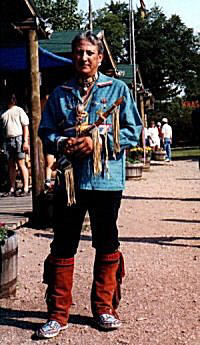 shocked
and said sure. I questioned it, I said I really donít understand.
I met you just two days ago, youíve given me a flute and now you want
to teach me how to make them. How come? His teacher, (which was 17
years prior to that) had passed on the instruction, that if you can
find somebody who can finish the song, teach them. It was really an
honour to date, because he has now passed and I was his only student.
He gave me the same instruction, that someday you will find somebody
who can feel it and finish the song, teach them. And I will! But what
does it mean to me, I donít know what it means to me, because with
those instruction, listen to your heart, your heart will tell you
which finger to lift, has never let me down in 27 years.
shocked
and said sure. I questioned it, I said I really donít understand.
I met you just two days ago, youíve given me a flute and now you want
to teach me how to make them. How come? His teacher, (which was 17
years prior to that) had passed on the instruction, that if you can
find somebody who can finish the song, teach them. It was really an
honour to date, because he has now passed and I was his only student.
He gave me the same instruction, that someday you will find somebody
who can feel it and finish the song, teach them. And I will! But what
does it mean to me, I donít know what it means to me, because with
those instruction, listen to your heart, your heart will tell you
which finger to lift, has never let me down in 27 years. 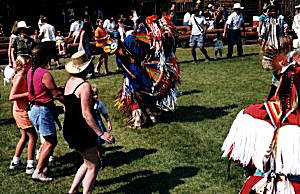 different,
itís just something that they havenít heard and canít put their thumb
on. What it is, is a traditional scale.Ē
different,
itís just something that they havenít heard and canít put their thumb
on. What it is, is a traditional scale.Ē